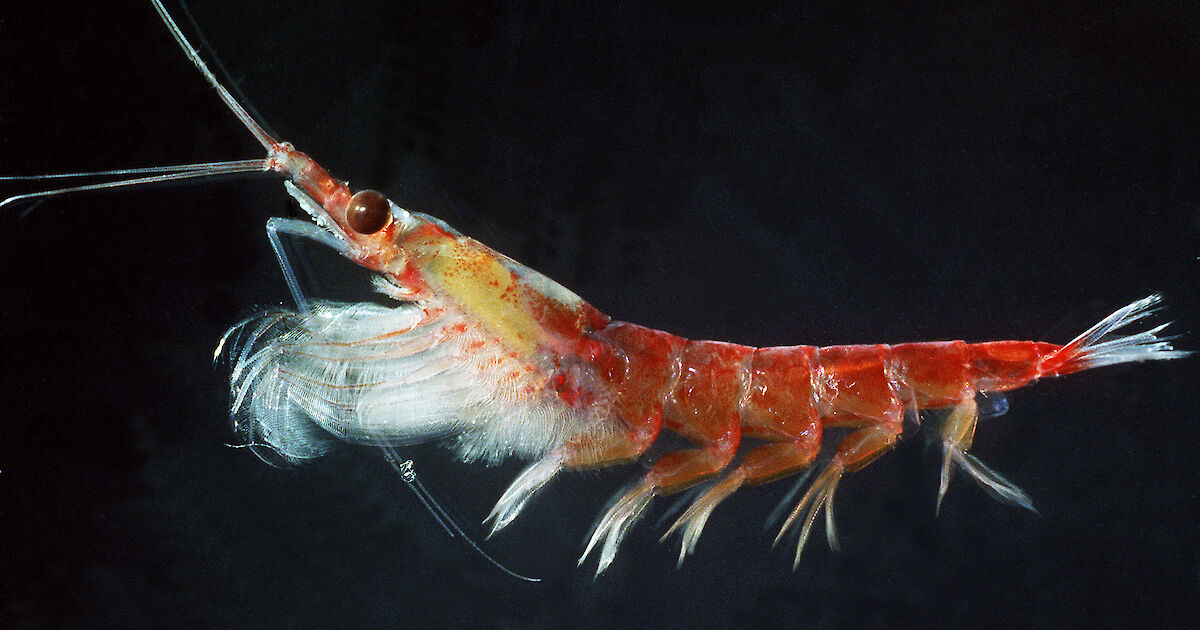
Krill, those tiny crustaceans that inhabit the cold waters of the world’s oceans, may be small in size, but they play a crucial role in marine ecosystems. In recent years, krill has gained significant attention due to its nutritional value and potential health benefits for humans and other animals. Despite their diminutive size, these fascinating creatures have some remarkable attributes and interesting facts that deserve exploring. In this article, we will uncover 12 intriguing facts about krill, shedding light on their importance, unique characteristics, and the various ways they impact the world around them. So, let’s dive into the depths of the ocean and discover the wonders of these incredible little creatures!
Key Takeaways:
- Krill are tiny but mighty creatures that serve as a crucial link in the ocean food chain, supporting the survival of numerous marine animals and contributing to the overall health of the oceans.
- Krill are not only fascinating in their own right, but they also offer valuable benefits to the environment and human well-being, making them an essential part of the wonders of the sea.
Krill are essential to the ocean food chain.
Krill serve as a crucial food source for numerous marine animals, including whales, seals, penguins, and seabirds. They form a critical link in the oceanic food web and support the survival of various species.
Krill are incredibly abundant.
These tiny creatures are estimated to have a total biomass greater than that of any other animal species on Earth. Their massive populations contribute to the overall health and productivity of the oceans.
Krill are found in all oceans.
Krill can be found in all the world’s oceans, from the polar regions to the tropics. However, they are most abundant in the Southern Ocean surrounding Antarctica.
Krill have a unique diet.
These small crustaceans primarily feed on phytoplankton, microscopic plant-like organisms that float in the ocean. They use their specialized feeding appendages to filter tiny particles from the water.
Krill have an interesting reproductive process.
Female krill can produce thousands of eggs in a single reproductive cycle. They release the eggs into the water, where they hatch into tiny larvae that eventually grow into adult krill.
Krill have a high nutritional value.
Krill are rich in omega-3 fatty acids, proteins, and antioxidants, which make them a valuable dietary supplement for both humans and animals.
Krill exhibit bioluminescence.
Some species of krill have the ability to produce light through bioluminescence. This adaptation helps them communicate, attract mates, and avoid predators in the dark depths of the ocean.
Krill travel in large swarms.
Krill often gather in massive swarms, sometimes consisting of millions of individuals. These swarms create a spectacular sight and provide a rich feeding ground for larger marine animals.
Krill can change their color.
Krill have the ability to change their body color, which allows them to blend in with their surroundings and avoid predation.
Krill have a short lifespan.
On average, krill live for about six years. However, some species may have shorter lifespans, while others can live up to ten years.
Krill are an environmentally sustainable food source.
Due to their abundance and rapid reproduction rates, krill is considered an environmentally sustainable alternative to other protein sources in the food industry.
Krill help combat climate change.
Krill play a vital role in the carbon cycle by sequestering carbon dioxide and transferring it to the deep ocean when they die. This process helps combat climate change by reducing greenhouse gases in the atmosphere.
There you have it – 12 fascinating facts about krill! These incredible creatures are not only vital to the ocean ecosystem but also offer valuable benefits to the environment and human well-being. Next time you think about the wonders of the sea, remember the remarkable role that krill play.
Conclusion
In conclusion, krill is a fascinating creature that plays a vital role in the marine ecosystem. These small crustaceans serve as a crucial food source for numerous marine animals, including whales, penguins, and seals. Besides their ecological significance, krill also possesses unique characteristics and qualities that make them an intriguing subject of study. From their incredible abundance to their ability to create massive swarms, krill continues to captivate scientists and researchers worldwide. Furthermore, the growing recognition of krill’s nutritional value has led to its use in supplements for human consumption. As we continue to explore the wonders of the ocean, understanding the importance and intricacies of krill will contribute to our knowledge of marine life and the delicate balance of our planet’s ecosystems.
FAQs
Q: What is krill?
A: Krill are small, shrimp-like marine crustaceans that serve as a crucial food source for many larger marine animals.
Q: Where are krill found?
A: Krill can be found in all the world’s oceans, particularly in nutrient-rich polar waters.
Q: How big do krill grow?
A: Krill typically grow to be around 1-6 centimeters in length, with some species reaching up to 15 centimeters.
Q: What do krill eat?
A: Krill primarily feed on phytoplankton and zooplankton, and they play a crucial role in the marine food chain by transferring energy to higher trophic levels.
Q: Can krill be consumed by humans?
A: Yes, krill oil supplements are increasing in popularity due to their high omega-3 fatty acid content and potential health benefits.
Q: Are krill populations at risk?
A: Krill populations are currently facing threats due to climate change, overfishing, and the impact of human activities on their habitats.
Q: How do krill reproduce?
A: Krill reproduce through a process called spawning, where females release eggs into the water column, and males simultaneously fertilize them.
Q: What is the lifespan of a krill?
A: The lifespan of krill varies depending on the species, with some living for only a few years, while others can live for up to a decade.
Q: Do krill have any predators?
A: Yes, krill are preyed upon by a variety of marine animals, including whales, penguins, seals, and fish.
Q: Can krill be farmed?
A: There are ongoing research efforts to develop sustainable krill farming practices, but it is still in the early stages of development.
Q: Are krill endangered?
A: While specific krill species may have localized population declines, they are not currently classified as endangered. Nevertheless, conservation efforts are crucial to ensure their future sustainability.
Q: Can krill change the color of their bodies?
A: Yes, krill have the ability to change the color of their bodies in response to environmental factors, such as light and temperature.
Krill's fascinating world offers endless wonders, but our oceans hold even more surprises. Curious about the benefits of Megared supplements? Intrigued by baleen whales' incredible adaptations? Looking for the perfect gift for your pet? Continue exploring marine life, health, and pet care with our captivating articles that delve deeper into these subjects. Uncover the secrets of Megared, learn mind-blowing facts about baleen whales, and discover the best pet subscription boxes to pamper your furry companions. Dive into a sea of knowledge and enrich your understanding of the world around you.
Was this page helpful?
Our commitment to delivering trustworthy and engaging content is at the heart of what we do. Each fact on our site is contributed by real users like you, bringing a wealth of diverse insights and information. To ensure the highest standards of accuracy and reliability, our dedicated editors meticulously review each submission. This process guarantees that the facts we share are not only fascinating but also credible. Trust in our commitment to quality and authenticity as you explore and learn with us.


